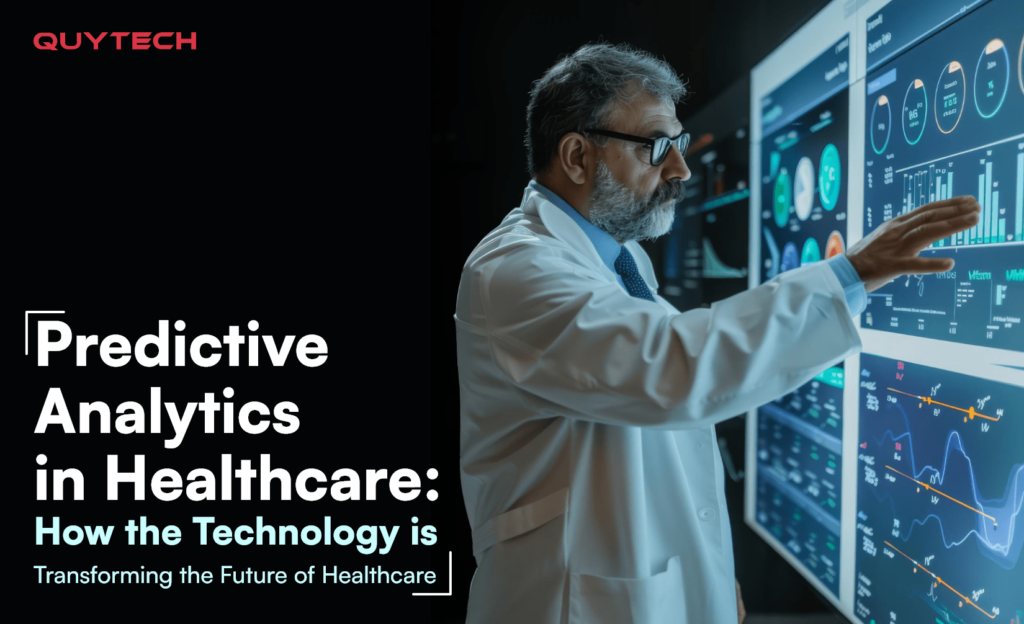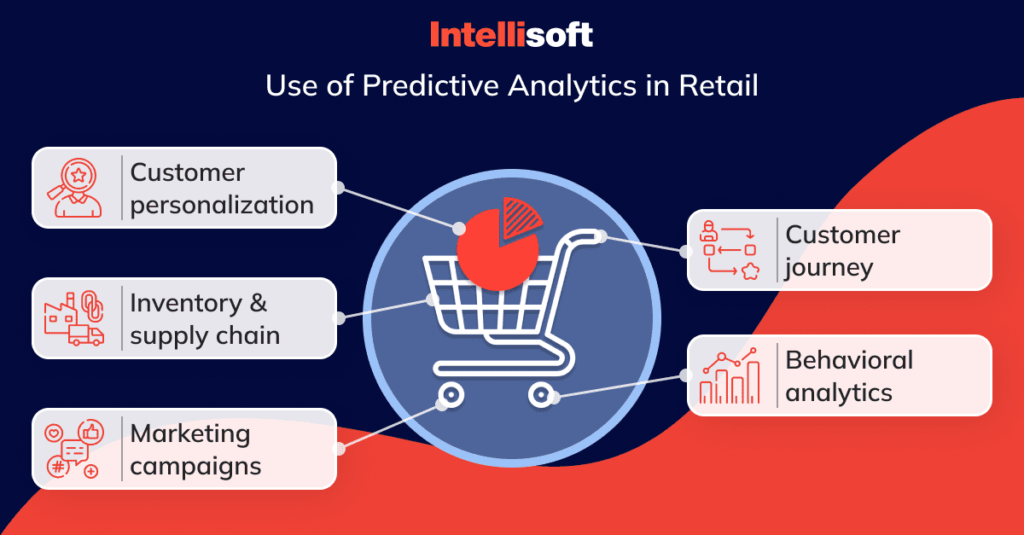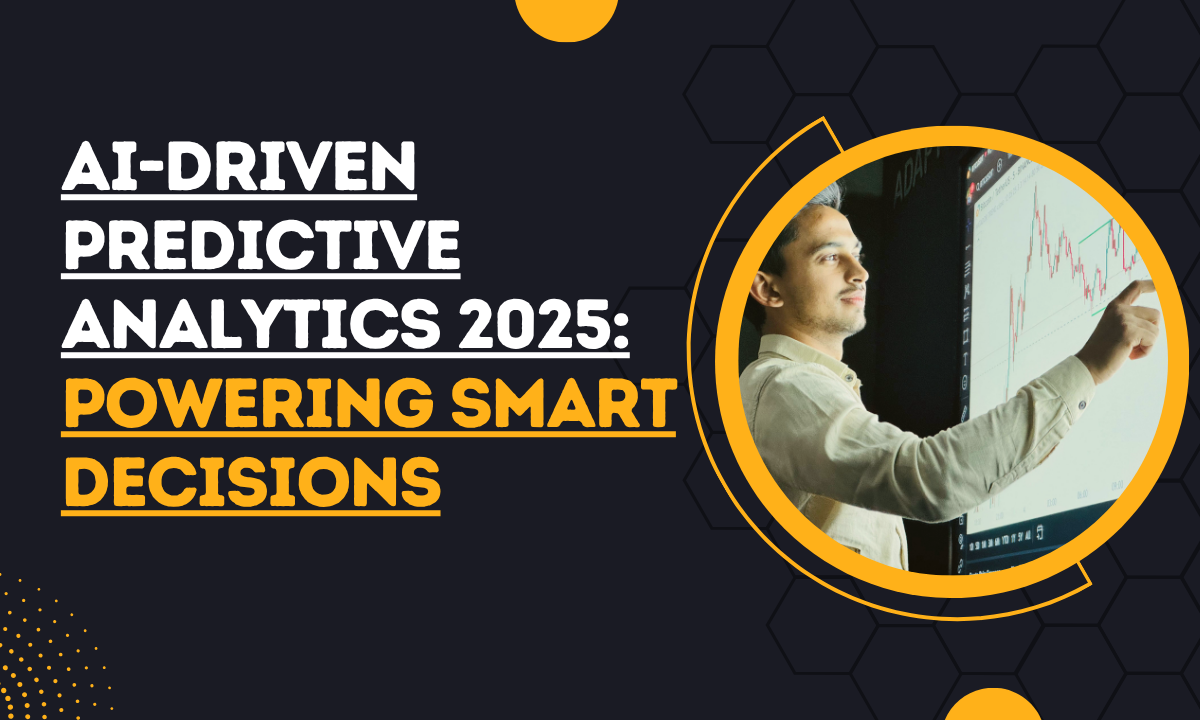AI-Driven Predictive Analytics 2025: Powering Smart Decisions
AI-driven predictive analytics is no longer confined to niche industries. It’s now the engine behind smarter financial planning, personalized healthcare, and dynamic supply chains.
By combining massive datasets with machine learning, predictive models don’t just analyze the past—they anticipate the future.
Let’s explore why these matters and where it’s taking us.
Predictive Analytics Defined

Image: Futurism
At its core, AI-driven predictive analytics involves using statistical models and AI algorithms to forecast outcomes. What sets predictive analytics apart is the depth and speed.
Instead of limited historical data, models now integrate real-time information from sensors, social media, and economic trends.
This allows businesses and individuals to make proactive decisions instead of reactive ones.
Whether it’s predicting a medical relapse or forecasting retail demand, the value lies in foresight.
Predictive Analytics in Action: How AI Shapes Decisions in Finance, Health, and Retail
| What It Means | Why It Matters | How You See It in Real Life |
|---|---|---|
| Predictive analytics uses AI to forecast outcomes faster and deeper than ever. | Helps businesses and individuals anticipate trends instead of reacting. | Investors, doctors, and retailers can make proactive decisions. |
| Personalized portfolios analyze historical and real-time data for each investor. | Optimizes growth and manages risk. | Your investments adapt as markets change. |
| AI forecasts health risks before symptoms appear. | Enables early intervention and prevention. | Wearables alert you to heart, glucose, or blood pressure issues. |
| Treatment plans can evolve based on predictive insights. | Moves medicine from generic care to personalized strategies. | Doctors adjust care dynamically for better outcomes. |
| Retail and supply chains use AI to predict demand and manage inventory. | Minimizes waste and ensures availability. | Stores stay stocked, deliveries run efficiently. |
| Ethical guardrails ensure fairness, transparency, and accountability. | Prevents bias and unintended harm. | AI decisions are explainable and responsible. |
Financial Planning Reinvented
Personalized Portfolios for Every Investor
Have you ever wondered why some investors consistently outperform the market?
Predictive analytics is the game-changer.
The future of wealth management is personalized profiles. By analyzing thousands of historical and real-time data points, AI can generate portfolio suggestions tailored to your unique risk profile.
It doesn’t just look at broad trends; it considers your goals, spending habits, and even external factors like geopolitical shifts.
This means your investments are no longer generic recommendations—they are personalized strategies designed to optimize growth while controlling risk.
You get guidance that adapts as the market evolves, not after the fact.
Institutional Strategies: Mitigating Crises Before They Happen
How do major financial institutions stay ahead of sudden market downturns?
AI-driven predictive analytics lets them simulate countless scenarios—ranging from currency fluctuations to global political events.
These insights provide early warnings, allowing institutions to act before minor disruptions escalate into crises.
It’s about anticipation, not reaction.
Interestingly, AI is already shaping predictive analytics in finance. Analysts now spend less time chasing trends and more time validating predictions.
They’re making decisions grounded in data rather than guesswork.
For you, this trickles down indirectly: a more stable financial ecosystem reduces volatility and provides confidence in broader market trends.
From Luck to Data-Driven Strategy
Remember when investing felt like a gamble?
That line between luck and skill is blurring.
Predictive analytics turns intuition into data-backed strategy.
By combining machine learning, historical patterns, and scenario simulations, AI identifies opportunities that humans might miss.
You don’t have to rely on a hunch anymore.
Instead, you can make informed choices and monitor them in real time. Imagine having a virtual strategist constantly analyzing the market for you.
It’s not infallible, but it dramatically shifts the odds in your favor, giving you more control over outcomes than ever before.
Healthcare Diagnostics
Anticipating Disease Before Symptoms Appear

Image source: GuyTech
Ever wondered how doctors can detect problems before you even feel them?
Wearable devices and health monitors are changing the game.
By continuously streaming data like heart rate, glucose levels, and blood pressure, models can flag potential issues days in advance.
Imagine knowing your risk of a heart flare-up before it happens.
This predictive insight allows you and your physician to act proactively, rather than reactively.
It’s early warning meets personalized care.
For patients, this means fewer emergencies, more informed lifestyle choices, and a sense of control over your own health journey.
Tailored Treatment Plans That Evolve
Why settle for one-size-fits-all medicine?
AI-based predictive analytics enables doctors to design treatment plans that adjust to your unique condition.
It factors in medical history, genetics, lifestyle, and even environmental influences.
The result?
Treatments that are more precise, effective, and adaptable over time. Your care plan evolves with you, not against you. This approach not only improves recovery outcomes but also reduces unnecessary procedures and medication.
Essentially, healthcare is becoming less about standard protocols and more about your individual profile, giving you a truly patient-centered experience.
Prevention Over Intervention
Isn’t it better to prevent illness than to treat it?
Predictive models are helping shift healthcare from intervention to prevention. Hospitals and clinics can identify at-risk patients early, suggest lifestyle adjustments, and monitor adherence in real time.
This predictive edge reduces hospital admissions and healthcare costs, while giving you actionable knowledge to stay healthier.
Prevention is now data-driven.
For example, a patient with rising blood sugar trends might receive tailored diet or exercise recommendations before diabetes develops.
The focus is no longer just fixing problems—it’s anticipating them before they become critical.
Retail and Supply Chains

Image Source: IntelliSoft
In retail, AI predictive analytics. is enhancing supply chain demand forecasting. It ensures shelves are stocked with exactly what customers need, when they need it.
In logistics, it optimizes delivery routes, predicts demand spikes, and minimizes waste.
AI-driven predictive analytics integrates global events—such as weather patterns or political disruptions—into forecasts.
This provides resilience in a world where disruptions are increasingly common. For businesses, it means survival.
For customers, it means satisfaction.
Sports and Entertainment
Interestingly, predictive analytics isn’t limited to serious domains.
In sports, models forecast athlete performance and reduce injury risk.
Entertainment platforms use it to predict viewer moods and recommend shows you’re more likely to enjoy.
AI-driven predictive analytics doesn’t just crunch numbers—it shapes experiences.
By personalizing content delivery, it enhances engagement and loyalty across industries.
Ethical Guardrails
Bias in Predictions: How to Spot It
Have you ever wondered if AI could unintentionally favor one group over another?
models learn from historical data, and if that data carries bias, the predictions might too.
Even small biases can have large consequences, especially in finance, hiring, or healthcare decisions.
key is vigilance: audits, transparency reports, and diverse datasets help you see where bias may creep in.
As a user or stakeholder, asking critical questions about data sources and model assumptions isn’t optional—it’s necessary to ensure fairness.
Awareness is the first step toward responsible adoption.
Explainability: From Black Box to Open Book
Do you trust a system you can’t understand?
Explainability is central to responsible AI.
Predictions should be interpretable—why did the model flag a loan applicant or recommend a treatment?
Without clarity, you risk blindly following guidance that may be flawed or unfair.
Organizations are now designing systems where outputs come with reasoning and confidence levels. This allows you to verify results and make informed choices.
Predictive insights become tools you can trust, not opaque directives.
Transparency turns AI from mysterious authority into a reliable partner in decision-making.
Accountability and Responsible Frameworks
Who is responsible when AI gets it wrong?
That question drives the rise of ethical frameworks around predictive analytics.
AI can now prioritize audits, fairness checks, and governance policies to ensure every prediction is traceable and accountable. You should look for systems where decisions can be reviewed and corrected if necessary.
Trust isn’t given—it’s earned through oversight and consistency.
By embedding ethical AI systems into design, organizations reduce the risk of misuse, protect individuals, and foster adoption.
Essentially, responsible frameworks turn AI from a potential threat into a beneficial, trustworthy decision-support tool.
Limitations and Risks
Despite advances, predictive analytics isn’t magic. It relies heavily on data quality. Incomplete or biased data leads to flawed outcomes.
Moreover, rare or unprecedented events remain difficult to model.
AI-driven predictive analytics is a powerful guide, not a fortune teller.
Recognizing its limits ensures you use it as a compass, not a guarantee.
The Road Ahead

Image Source: TechProfree
Seamless Integration into Daily Life
Have you noticed how technology quietly anticipates your needs?
The next phase of predictive tools won’t require you to actively seek insights.
AI-based predictive analytics will embed itself into the apps and devices you already use.
From your smartwatch suggesting optimal activity times to office software highlighting project risks before you ask, predictions will become effortless. You’ll benefit without extra effort, and decisions will feel intuitive.
This isn’t science fiction—it’s the evolution of intelligent systems.
It’s something that works quietly in the background, giving you more time and mental bandwidth to focus on what truly matters.
Proactive Decision-Making for Individuals
Why wait for events to unfold before acting?
Soon, predictive models will provide actionable insights before you even realize you need them.
Imagine your calendar suggesting the best time to schedule a meeting based on project deadlines, stress levels, and team availability.
Or your personal finance app alerting you to spending risks before they accumulate.
You won’t just react—you’ll anticipate.
This shift empowers you to make smarter, more timely decisions every day.
As AI increasingly understands your habits and preferences, it becomes less of a tool and more of a personal assistant you can trust implicitly.
Transforming Organizations and Workflows
How will businesses adapt to this predictive future?
AI-driven predictive analytics is moving beyond dashboards into workflow automation.
Teams will no longer pull reports manually; insights will arrive automatically, highlighting opportunities, risks, and next steps.
This integration streamlines operations, reduces errors, and accelerates decision-making.
Think of it as having an invisible strategist embedded in every department.
For you, whether at work or in personal projects, it means decisions become faster, more informed, and less stressful.
The road ahead is one where predictions aren’t separate—they are part of how you live and work every single day.
Related Posts
AI Context Window: A Simple Guide for Non-Techies
Understand how AI “sees” and processes information without needing a technical background. Learn the basics of context windows and why they matter.
Survive or Vanish: Multimodal AI Applications in Media
Explore how AI is combining text, images, and audio to transform media. Adapt or risk falling behind in this rapidly evolving landscape.
AI for the Rest of Us: 21 Easy Wins Without Tech Know-How
Discover practical AI tools and hacks anyone can use, no coding required. Simple strategies to boost productivity, creativity, and learning
Fighting AI Bias: How to Build Fair and Trustworthy Systems
Learn the key steps to reduce bias in AI and make systems ethical. Understand accountability, transparency, and fairness in real-world applications.
FAQs
Q1. How does predictive analytics differ from traditional analytics?
Traditional analytics explains what happened, while predictive analytics forecasts what is likely to happen next. It’s future-focused, not just historical.
Q2. Which sectors gain most from it?
Finance, healthcare, retail, and logistics use predictive analytics heavily to reduce risks, personalize services, optimize supply chains, and improve outcomes.
Q3. Can predictions be wrong?
Yes, predictions depend on data quality. Inaccurate, biased, or incomplete datasets—as well as rare, unpredictable events—can lead to errors.
Q4. Is privacy a concern?
Absolutely. Predictive models often rely on sensitive data, so strong safeguards, regulations, and ethical practices are critical to protect user trust.
Q5. What technologies power predictive analytics?
Machine learning, AI, big data platforms, and cloud computing drive predictive analytics, enabling faster processing and more accurate forecasting.
Q6. Do small businesses benefit too?
Yes, even small businesses can use predictive tools to forecast sales, improve marketing ROI, and manage resources more efficiently.
Q7. How does predictive analytics support decision-making?
It provides data-driven insights that help leaders anticipate risks, seize opportunities, and make smarter, proactive business choices.
Conclusion
AI-driven predictive analytics is turning data into foresight.
It empowers smarter choices, sharper strategies, and personalized experiences. From finance to healthcare, education to career planning, this technology allows individuals and organizations to anticipate challenges.
It also helps optimize outcomes, and act proactively rather than reactively.
For investors, it personalizes portfolios and mitigates risks; for patients, it predicts health events before symptoms appear, shifting medicine from intervention to prevention.
In learning, it tailors study plans, adapts tutoring, and enhances accessibility.
But with great power comes responsibility.
Ethical guardrails and transparency are key to prevent biased or limiting predictions. As AI embeds into daily workflows, it becomes an invisible but powerful partner in your decisions.
The future isn’t just about convenience; it’s about using foresight responsibly, balancing innovation with accountability.

